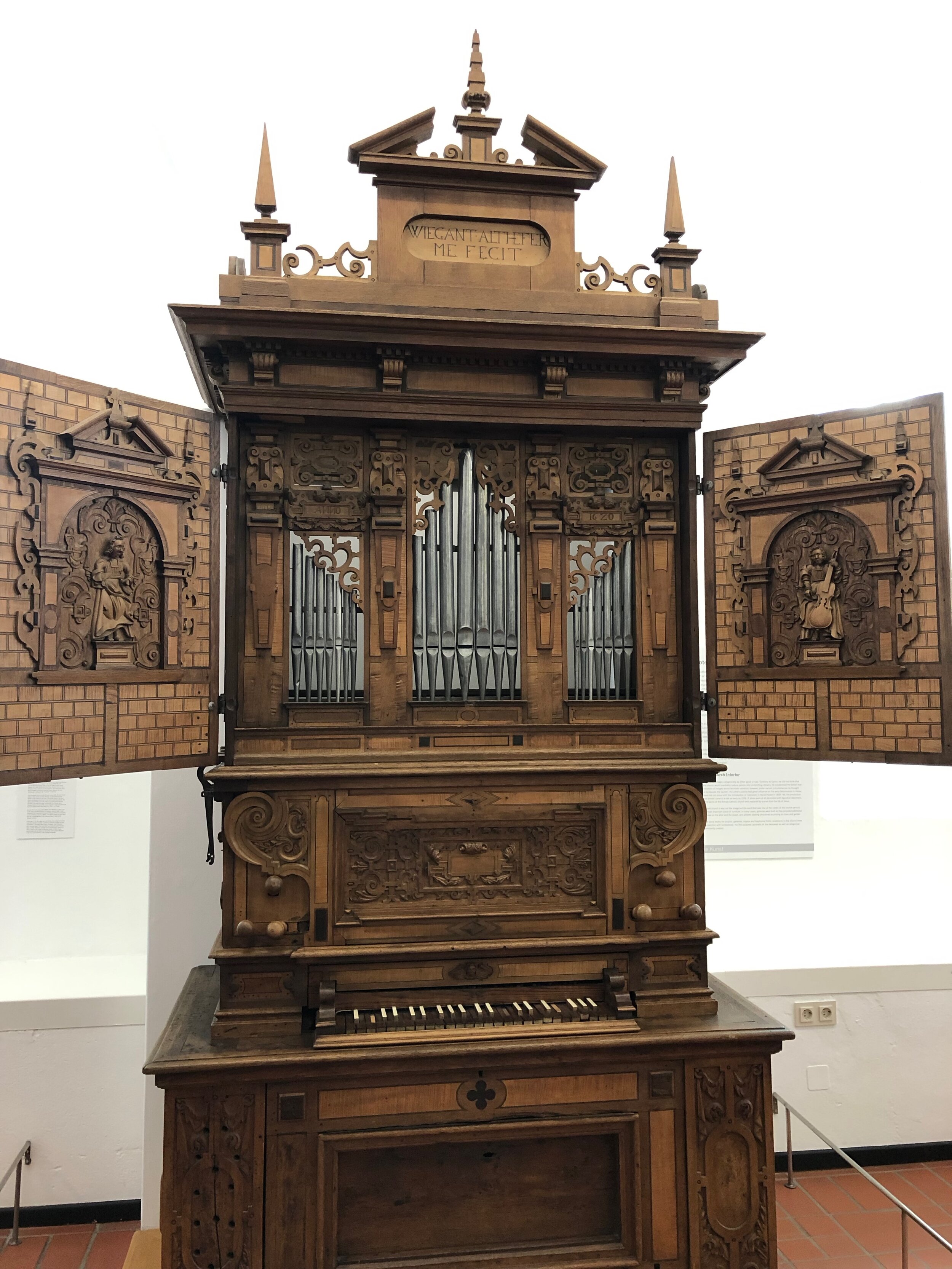Ever heard of a bajón? Meet the renaissance predecessor to the bassoon, also known as a dulcian or a curtal (depending on which country you were in). This instrument came in different sizes and was played in consorts, wind bands, and later as a continuo instrument!
Baroque lute construction
Need 5 minutes of beauty this morning? How about this video showing some of the artistry that goes into making a baroque lute (and some gorgeous playing of said lute)!
Natural Horn
Early horns - how exactly do they play all the notes with no valves? Check out this awesome explanation from my Handel + Haydn Society colleague Todd Williams!
Iconography - helpful or not?
How much can art inform us about musical practice in the past, and how much does it just get in the way? Early Music Sources finds out (with some really pretty paintings)!
Clavicytherium
Most people are familiar with harpsichords. And we've talked about the lautenwerck before. But how about the clavicytherium?
Turkish Crescent
About the Turkish Crescent (featured in Haydn’s Symphony 100 and other places): Much of the modern orchestra’s percussion comes from Turkish military bands. First European military bands imported Turkish musicians. Then they assigned Turkish instruments to black performers dressed in exotic Eastern garb.
What is a lautenwerck?
Bach’s Suite in E minor, BWV 996 is usually played on harpsichord, lute, or even piano, but it was written for something called a “lautenwerck”. Ever wondered what that actually was?
Early Organs in Marburg
This week’s Early Music Monday post comes from Marburg, Germany! This organ from the early 1600s is on display in the Museum für Kunst und Kulturgeschichte at the Landgrafenschloss (Museum for art and cultural history at the Landgrave’s Castle). Read more about this amazing instrument in the explanatory notes below!
What is a theorbo, really?
I’ve been talking about viols for a few weeks now, but one of the other cool instruments in the Early Music world is the theorbo.




